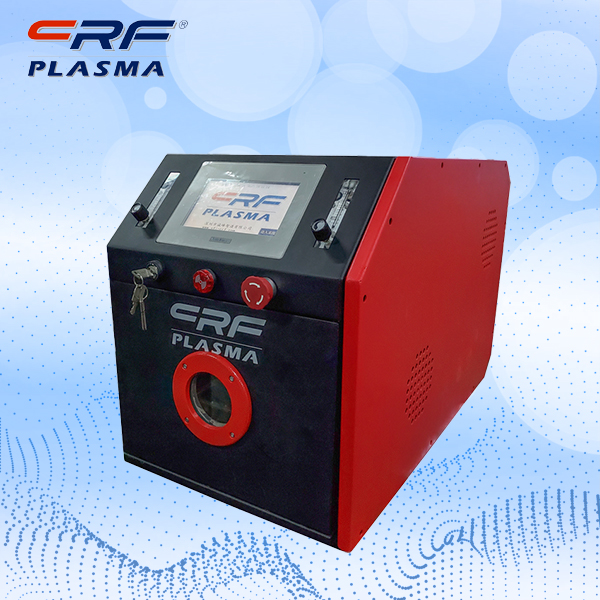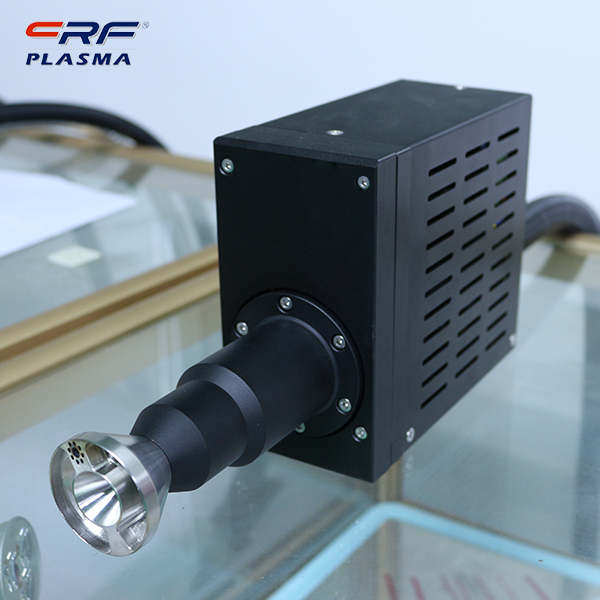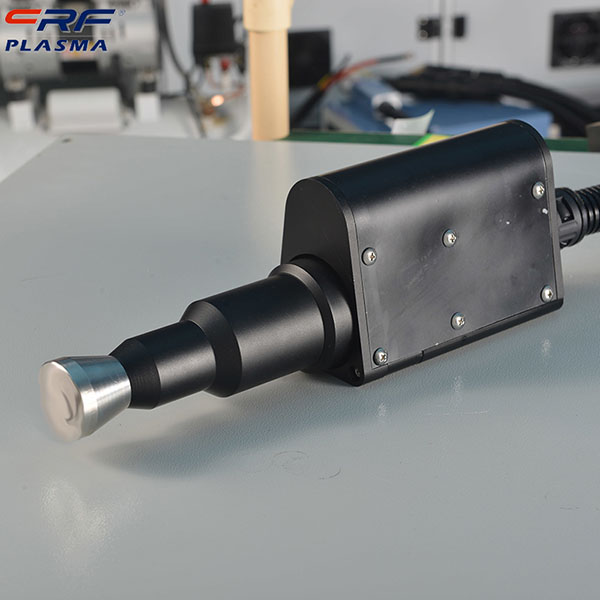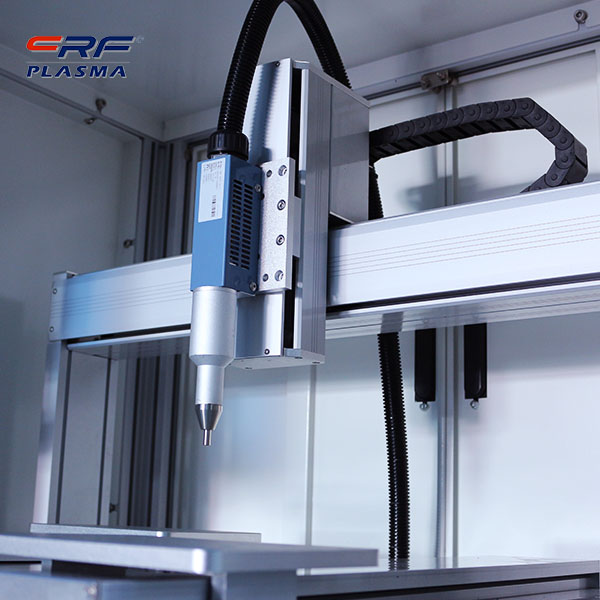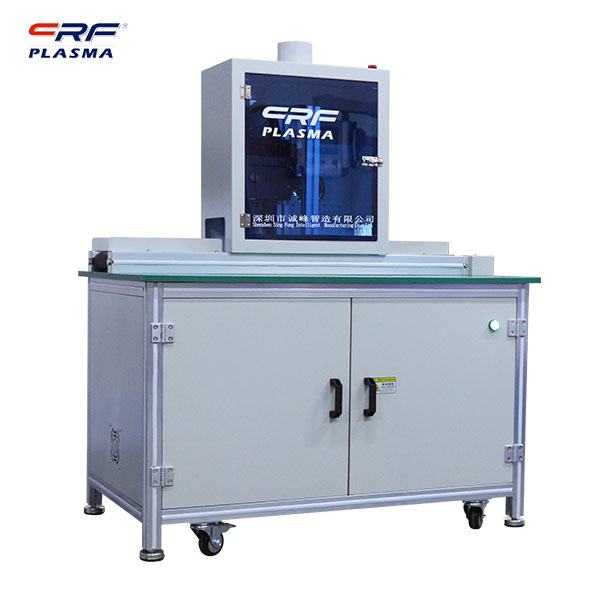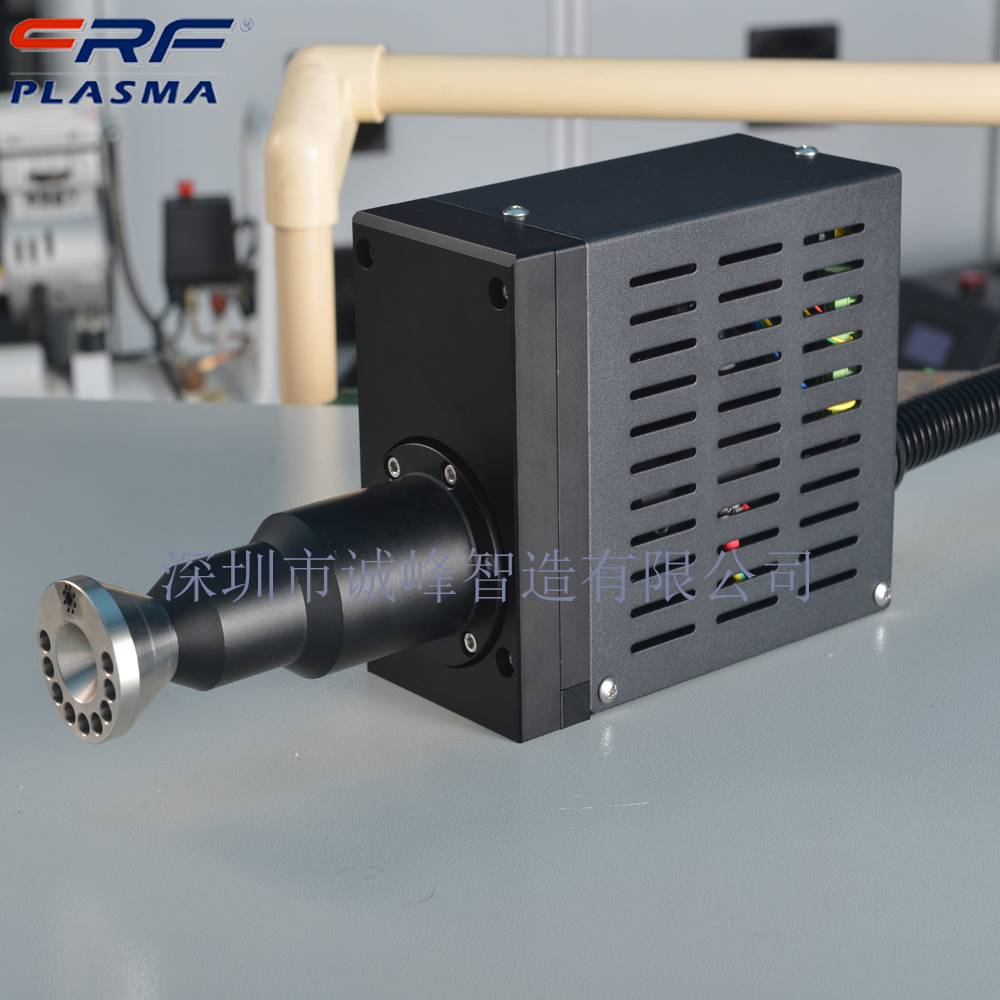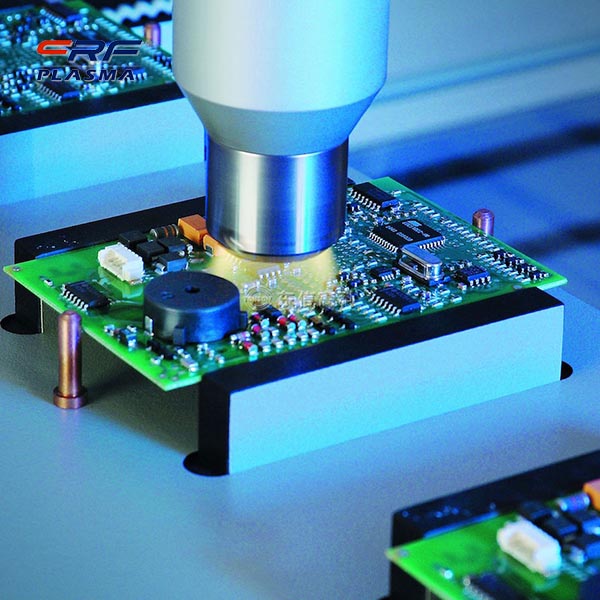
Welcome to Shenzhen Sing Fung Intelligent Manufacturing Co., Ltd.
E-mail:shaobo@sfi-crf.com
The effect of plasma plasma energy density on the conversion of reactants CH4 and CO2, C2 hydrocarbons, and CO yields
- Categories:Industry News
- Author:Plasma cleaning machine-CRF plasma plasma equipment-plasma surface treatment machine manufacturer-chengfeng intelligent manufacturing
- Origin:
- Time of issue:2022-02-18
- Views:
(Summary description)The effect of plasma plasma energy density on the conversion of reactants CH4 and CO2, C2 hydrocarbons, and CO yields: The effect of plasma energy density on the conversion rates of CH4 and CO2, the yields of C2 hydrocarbons and CO. It can be seen that the conversion rates of CH4 and CO2 both increase with the increase of energy density, which means increasing plasma plasma power and decreasing feed gas flow. That is, increasing the energy density is beneficial to improve the conversion rate of CH and CO2. When the energy density is 2200kJ/mol, the conversion rates of CH4 and CO2 are 43.6% and 58.4%, respectively. Although increasing the energy density is beneficial to improve the conversion rate of CH4 and CO2, it is beneficial to the cleavage of the C-H bond of methane (4.5eV) and the cleavage of the C-O bond of carbon dioxide (5.45eV), but the effects on the two are not the same. When the energy density is lower than 1500KJ/mol, the CH4 conversion rate is higher than the CO2 conversion rate under the same experimental conditions, which means that at a lower energy density, the average energy of the high-energy electrons in the system is lower, and the average energy of most electrons and the CH bond of methane is The bond energy is similar but lower than the cracking energy of carbon dioxide CO bond, so the CH4 conversion rate is higher than the CO2 conversion rate. When the energy density is higher than 1500 kJ/mol, the average energy of electrons in the system increases, and the energy of most electrons gradually approaches the cracking energy of carbon dioxide C-O bond, and the CO2 conversion rate increases rapidly. At the same time, the conversion rate of CH4 showed a logarithmic upward trend with the increase of energy density, and the conversion rate of CO2 showed a linear upward trend with the increase of energy density. This may be related to the cracking characteristics of methane and carbon dioxide under plasma plasma. Methane is cracked successively, that is, the conversion of one methane molecule often consumes multiple high-energy electrons. Methane. A lower energy density should be chosen for methane conversion. The influence of energy density on the yields of C2 hydrocarbons and CO both showed a linear upward trend with the increase of energy density, and the linear slope of CO yield was significantly higher than that of C2 hydrocarbon yield. For the C2 hydrocarbon yield, when the energy density was increased from 350 kJ/mol to 2200 k.J/mol, the C2 hydrocarbon yield increased from 5.7% to 20.6%, an increase of nearly 15 percentage points. For the CO yield, when the energy density increased from 350 kJ/mol to 2200 kJ/mol, the CO yield increased from 11.6% to 76.4%, an increase of nearly 65 percentage points. This shows that in the energy range investigated in the experiment, increasing the energy density is beneficial to improve the yield of C2 hydrocarbons and CO, but from the perspective of energy consumption, it is not comprehensive to measure the reaction efficiency only by the product yield, so it is necessary to introduce energy Efficiency This physical quantity evaluates the CO2 oxidation CH4 conversion reaction under the action of plasma plasma. Since no direct evidence for the conversion of CO2 to C2 hydrocarbons can be obtained under the experimental conditions, it can be considered that the C2 hydrocarbons originate from the coupling reaction of methane: CH4 → 0.5C2H6+0.5H2 ∆H11 =32.55kJ/mol (4-2) CH4 → 0.5C2H4+1H2 ∆H12=101.15kJ/mol (4-3) CH4 → 0.5C2H2+1.5H2 ∆H13=188.25kJ/mol (4-4) Coupling the above three reaction equations and considering the distribution of C2 hydrocarbon products, the overall reaction equation of methane coupling to form C2 hydrocarbons can be expressed as CH4 → 0.5n11C2H6+0.5n12C2H4+0.5n13C2H2+(2-1.5n11-n12-0.5n13)H2 ∆H1=(32.55n11+101.15n12+188.25n13)kJ/mol (4-5) n11, n2, n3 in formula (4-5) represent respectively: n11 is the mole fraction of C2H6 in the C2 hydrocarbon product, mol/%; n12 is the C2 hydrocarbon
The effect of plasma plasma energy density on the conversion of reactants CH4 and CO2, C2 hydrocarbons, and CO yields
(Summary description)The effect of plasma plasma energy density on the conversion of reactants CH4 and CO2, C2 hydrocarbons, and CO yields:
The effect of plasma energy density on the conversion rates of CH4 and CO2, the yields of C2 hydrocarbons and CO. It can be seen that the conversion rates of CH4 and CO2 both increase with the increase of energy density, which means increasing plasma plasma power and decreasing feed gas flow. That is, increasing the energy density is beneficial to improve the conversion rate of CH and CO2. When the energy density is 2200kJ/mol, the conversion rates of CH4 and CO2 are 43.6% and 58.4%, respectively.
Although increasing the energy density is beneficial to improve the conversion rate of CH4 and CO2, it is beneficial to the cleavage of the C-H bond of methane (4.5eV) and the cleavage of the C-O bond of carbon dioxide (5.45eV), but the effects on the two are not the same. When the energy density is lower than 1500KJ/mol, the CH4 conversion rate is higher than the CO2 conversion rate under the same experimental conditions, which means that at a lower energy density, the average energy of the high-energy electrons in the system is lower, and the average energy of most electrons and the CH bond of methane is The bond energy is similar but lower than the cracking energy of carbon dioxide CO bond, so the CH4 conversion rate is higher than the CO2 conversion rate. When the energy density is higher than 1500 kJ/mol, the average energy of electrons in the system increases, and the energy of most electrons gradually approaches the cracking energy of carbon dioxide C-O bond, and the CO2 conversion rate increases rapidly. At the same time, the conversion rate of CH4 showed a logarithmic upward trend with the increase of energy density, and the conversion rate of CO2 showed a linear upward trend with the increase of energy density. This may be related to the cracking characteristics of methane and carbon dioxide under plasma plasma. Methane is cracked successively, that is, the conversion of one methane molecule often consumes multiple high-energy electrons. Methane. A lower energy density should be chosen for methane conversion.
The influence of energy density on the yields of C2 hydrocarbons and CO both showed a linear upward trend with the increase of energy density, and the linear slope of CO yield was significantly higher than that of C2 hydrocarbon yield. For the C2 hydrocarbon yield, when the energy density was increased from 350 kJ/mol to 2200 k.J/mol, the C2 hydrocarbon yield increased from 5.7% to 20.6%, an increase of nearly 15 percentage points. For the CO yield, when the energy density increased from 350 kJ/mol to 2200 kJ/mol, the CO yield increased from 11.6% to 76.4%, an increase of nearly 65 percentage points. This shows that in the energy range investigated in the experiment, increasing the energy density is beneficial to improve the yield of C2 hydrocarbons and CO, but from the perspective of energy consumption, it is not comprehensive to measure the reaction efficiency only by the product yield, so it is necessary to introduce energy Efficiency This physical quantity evaluates the CO2 oxidation CH4 conversion reaction under the action of plasma plasma.
Since no direct evidence for the conversion of CO2 to C2 hydrocarbons can be obtained under the experimental conditions, it can be considered that the C2 hydrocarbons originate from the coupling reaction of methane:
CH4 → 0.5C2H6+0.5H2 ∆H11 =32.55kJ/mol (4-2)
CH4 → 0.5C2H4+1H2 ∆H12=101.15kJ/mol (4-3)
CH4 → 0.5C2H2+1.5H2 ∆H13=188.25kJ/mol (4-4)
Coupling the above three reaction equations and considering the distribution of C2 hydrocarbon products, the overall reaction equation of methane coupling to form C2 hydrocarbons can be expressed as
CH4 → 0.5n11C2H6+0.5n12C2H4+0.5n13C2H2+(2-1.5n11-n12-0.5n13)H2
∆H1=(32.55n11+101.15n12+188.25n13)kJ/mol (4-5)
n11, n2, n3 in formula (4-5) represent respectively: n11 is the mole fraction of C2H6 in the C2 hydrocarbon product, mol/%; n12 is the C2 hydrocarbon
- Categories:Industry News
- Author:Plasma cleaning machine-CRF plasma plasma equipment-plasma surface treatment machine manufacturer-chengfeng intelligent manufacturing
- Origin:
- Time of issue:2022-02-18 16:18
- Views:
The effect of plasma plasma energy density on the conversion of reactants CH4 and CO2, C2 hydrocarbons, and CO yields:
The effect of plasma energy density on the conversion rates of CH4 and CO2, the yields of C2 hydrocarbons and CO. It can be seen that the conversion rates of CH4 and CO2 both increase with the increase of energy density, which means increasing plasma plasma power and decreasing feed gas flow. That is, increasing the energy density is beneficial to improve the conversion rate of CH and CO2. When the energy density is 2200kJ/mol, the conversion rates of CH4 and CO2 are 43.6% and 58.4%, respectively.
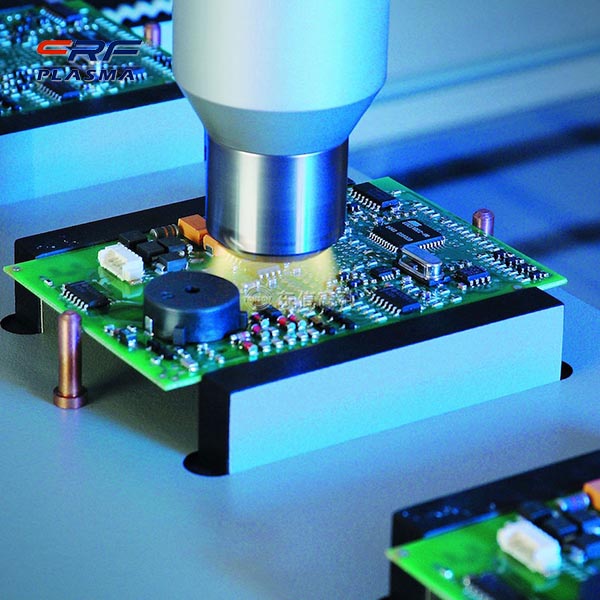 Although increasing the energy density is beneficial to improve the conversion rate of CH4 and CO2, it is beneficial to the cleavage of the C-H bond of methane (4.5eV) and the cleavage of the C-O bond of carbon dioxide (5.45eV), but the effects on the two are not the same. When the energy density is lower than 1500KJ/mol, the CH4 conversion rate is higher than the CO2 conversion rate under the same experimental conditions, which means that at a lower energy density, the average energy of the high-energy electrons in the system is lower, and the average energy of most electrons and the CH bond of methane is The bond energy is similar but lower than the cracking energy of carbon dioxide CO bond, so the CH4 conversion rate is higher than the CO2 conversion rate. When the energy density is higher than 1500 kJ/mol, the average energy of electrons in the system increases, and the energy of most electrons gradually approaches the cracking energy of carbon dioxide C-O bond, and the CO2 conversion rate increases rapidly. At the same time, the conversion rate of CH4 showed a logarithmic upward trend with the increase of energy density, and the conversion rate of CO2 showed a linear upward trend with the increase of energy density. This may be related to the cracking characteristics of methane and carbon dioxide under plasma plasma. Methane is cracked successively, that is, the conversion of one methane molecule often consumes multiple high-energy electrons. Methane. A lower energy density should be chosen for methane conversion.
Although increasing the energy density is beneficial to improve the conversion rate of CH4 and CO2, it is beneficial to the cleavage of the C-H bond of methane (4.5eV) and the cleavage of the C-O bond of carbon dioxide (5.45eV), but the effects on the two are not the same. When the energy density is lower than 1500KJ/mol, the CH4 conversion rate is higher than the CO2 conversion rate under the same experimental conditions, which means that at a lower energy density, the average energy of the high-energy electrons in the system is lower, and the average energy of most electrons and the CH bond of methane is The bond energy is similar but lower than the cracking energy of carbon dioxide CO bond, so the CH4 conversion rate is higher than the CO2 conversion rate. When the energy density is higher than 1500 kJ/mol, the average energy of electrons in the system increases, and the energy of most electrons gradually approaches the cracking energy of carbon dioxide C-O bond, and the CO2 conversion rate increases rapidly. At the same time, the conversion rate of CH4 showed a logarithmic upward trend with the increase of energy density, and the conversion rate of CO2 showed a linear upward trend with the increase of energy density. This may be related to the cracking characteristics of methane and carbon dioxide under plasma plasma. Methane is cracked successively, that is, the conversion of one methane molecule often consumes multiple high-energy electrons. Methane. A lower energy density should be chosen for methane conversion.
The influence of energy density on the yields of C2 hydrocarbons and CO both showed a linear upward trend with the increase of energy density, and the linear slope of CO yield was significantly higher than that of C2 hydrocarbon yield. For the C2 hydrocarbon yield, when the energy density was increased from 350 kJ/mol to 2200 k.J/mol, the C2 hydrocarbon yield increased from 5.7% to 20.6%, an increase of nearly 15 percentage points. For the CO yield, when the energy density increased from 350 kJ/mol to 2200 kJ/mol, the CO yield increased from 11.6% to 76.4%, an increase of nearly 65 percentage points. This shows that in the energy range investigated in the experiment, increasing the energy density is beneficial to improve the yield of C2 hydrocarbons and CO, but from the perspective of energy consumption, it is not comprehensive to measure the reaction efficiency only by the product yield, so it is necessary to introduce energy Efficiency This physical quantity evaluates the CO2 oxidation CH4 conversion reaction under the action of plasma plasma.
Since no direct evidence for the conversion of CO2 to C2 hydrocarbons can be obtained under the experimental conditions, it can be considered that the C2 hydrocarbons originate from the coupling reaction of methane:
CH4 → 0.5C2H6+0.5H2 ∆H11 =32.55kJ/mol (4-2)
CH4 → 0.5C2H4+1H2 ∆H12=101.15kJ/mol (4-3)
CH4 → 0.5C2H2+1.5H2 ∆H13=188.25kJ/mol (4-4)
Coupling the above three reaction equations and considering the distribution of C2 hydrocarbon products, the overall reaction equation of methane coupling to form C2 hydrocarbons can be expressed as
CH4 → 0.5n11C2H6+0.5n12C2H4+0.5n13C2H2+(2-1.5n11-n12-0.5n13)H2
∆H1=(32.55n11+101.15n12+188.25n13)kJ/mol (4-5)
n11, n2, n3 in formula (4-5) represent respectively: n11 is the mole fraction of C2H6 in the C2 hydrocarbon product, mol/%; n12 is the C2 hydrocarbon
Scan the QR code to read on your phone

TEL:0755-3367 3020 / 0755-3367 3019

E-mail:sales-sfi@sfi-crf.com

ADD:Mabao Industrial Zone, Huangpu, Baoan District, Shenzhen




